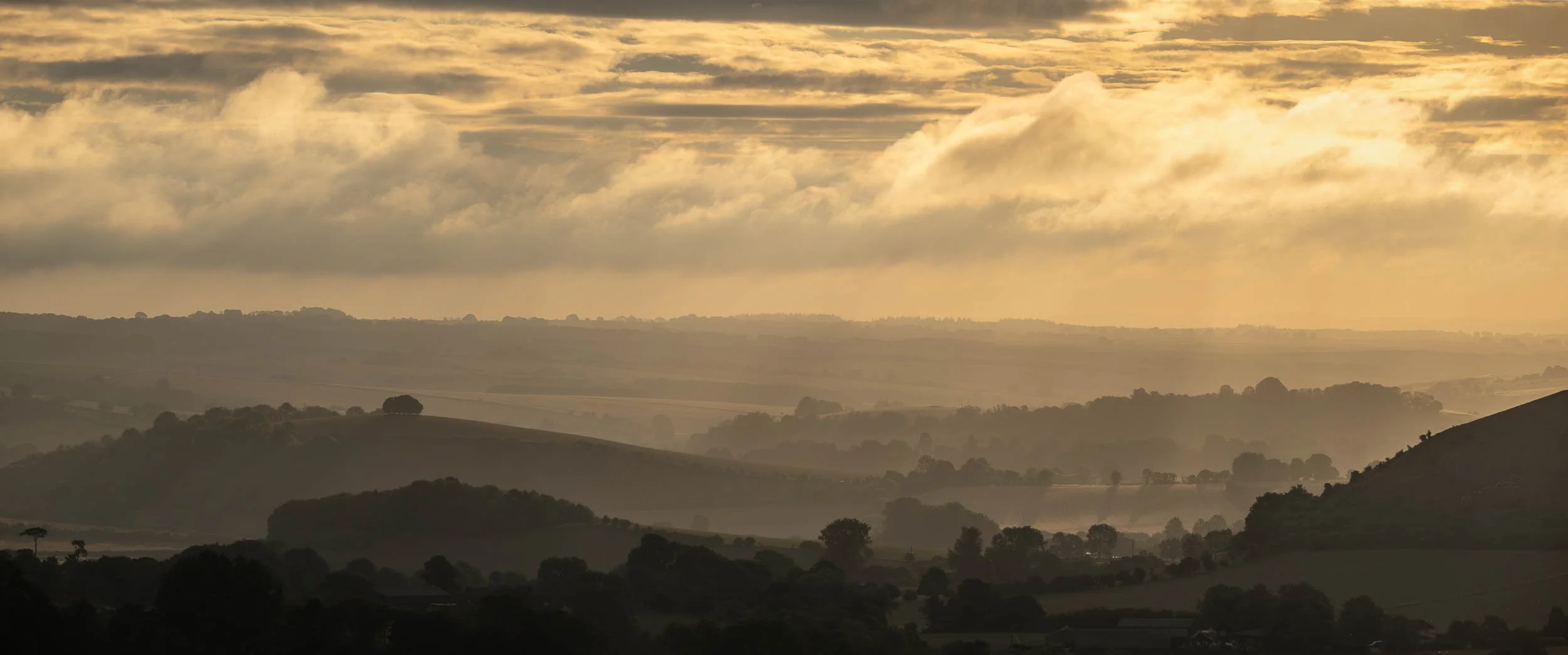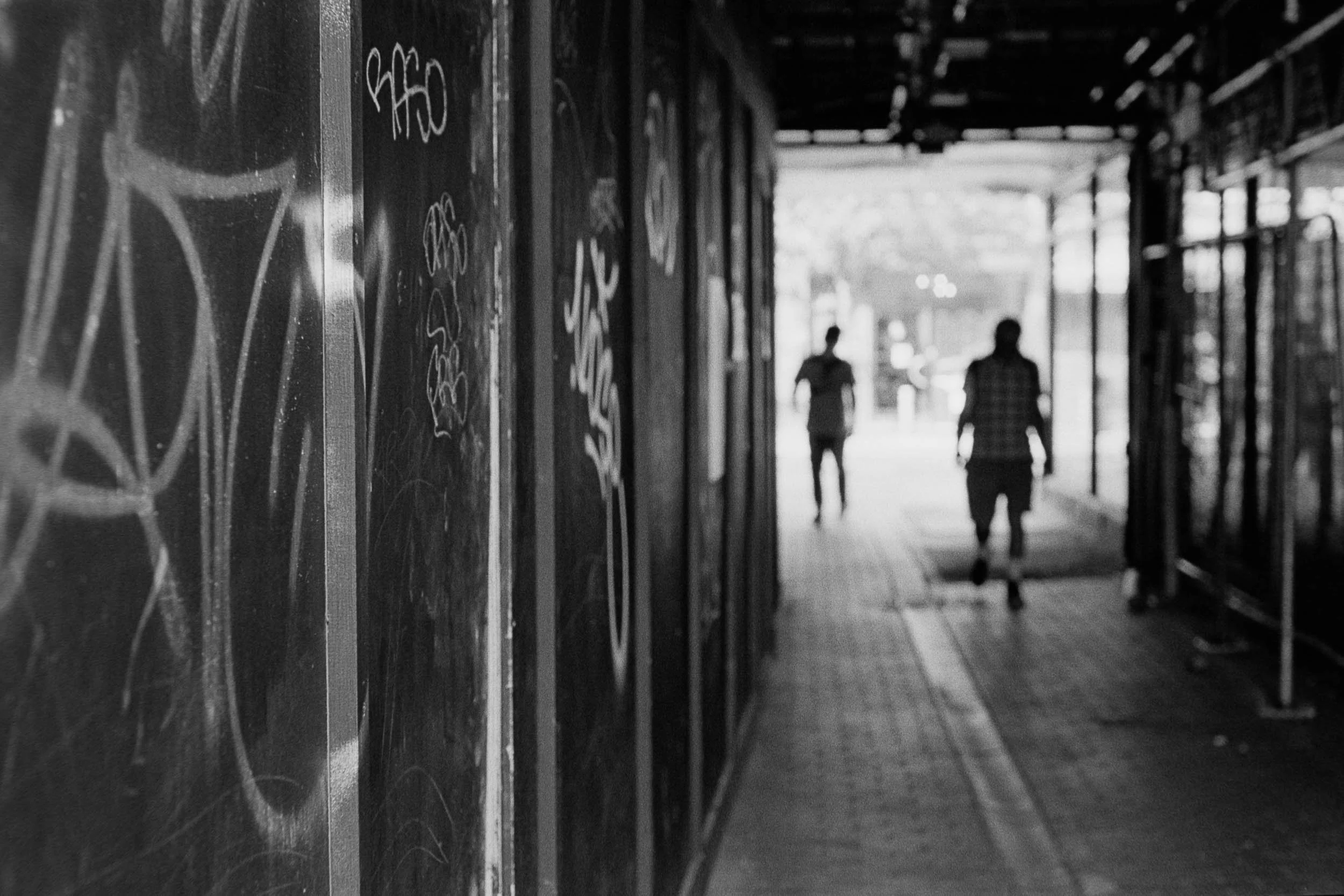Summer Landscape Photography in the UK: Woodland, Infrared & Film Adventures
As many landscape photographers know, summer in the UK can be a tricky time to shoot. The sun rises as early as 4:30 a.m., so if you're chasing that golden hour, it means some very early starts. I’ve found myself out there by 3:30 a.m. more than once. But despite the long days and harsh midday light, summer landscape photography has a lot to offer if you're willing to adapt.
This image below is from a quick visit to Cranborne Chase in Wiltshire, taken just as a summer storm rolled in, proof that summer offers dramatic moments if you're willing to get up at those ungodly hours. (There is a Link to the YouTube Vlog at the bottom of this page)
Summer dawn in Cranborne Chase, Wiltshire
In this post, I’ll share several creative photography ideas for summer, from early morning shoots and infrared photography to woodland scenes, black and white film photography, and even a two-day paddleboarding trip along the River Thames.
Early Morning Landscape Photography & UK Poppy Fields
One of the highlights of summer photography for me is capturing the soft light in the early hours. Around here, the poppy fields can be spectacular in early morning or evening light. These poppies are increasingly harder to find at the moment. I understand that the weather this year has been a particular problem along with the different crops that the farmers are growing this season. These field are teaming with early morning wildlife. This offers a unique opportunity for vibrant, atmospheric images if you leave the van prepared for those wildlife shots. There is always a competing balance to having your camera set up for a shot of a deer or hare in the fields as you approach your chosen location and the rushed setup you will need to capture the fleeting glance of sunrise light on a field of poppies once you get there.
British Wildlife Photography in the early morning on the way to the poppies.
Poppies and fields in Oxfordshire
Infrared & Black and White Photography in Harsh Light
Church yard in Infrared in Henley on Thames, Oxfordshire
When the summer sun is strong and the shadows are harsh, I turn to infrared photography and black and white photography. Both handle contrast brilliantly and allow you to work with, rather than against, the light.
I’ve been shooting infrared landscapes during the brightest parts of the day. This works especially well in locations where water, foliage, and man-made structures combine, such as rivers, canals, or city parks.
Here’s the trick: Try not to make infrared look like infrared. Let the viewer wonder about the image. That’s why scenes with subtle foliage and strong architectural elements work so well.
Instead of fighting harsh light, use it to your advantage. Infrared black & white helps break compositions down into bold shapes, textures, and shadow patterns, especially when diagonal light or strong leading lines emerge.
(I will post more blogs soon, with black and white photography tips. Don’t forget to look at my B&W page for more inspiration.)
I used Protech Photographic for my infrared camera conversion.
35mm Film Photography & Street Photography in Summer
A bit of extreme street photography experimentation with the 35mm film Pentax in Reading Town. (I am just loving that Ilford HP5 look again.)
This summer I’ve returned to shooting 35mm film, using a classic Olympus 35 SP loaded with black and white film. Film street photography is slower and more intentional. It’s all about pre-metering, zone focusing, and waiting for the scene to align. There is no autofocus or rapid fire here.
It’s refreshing to work within the constraints of film: fixed ISO, limited exposures, and no LCD screen. I’ll post a full blog soon on my black and white film development workflow, so stay tuned if you're curious.
(Once I have time, I will do a review blog comparing the Olympus 35 SP and my Pentax film cameras.)
UK Woodland Photography in Summer: Tips & Light Advice
Despite the long days, summer is one of my favourite times to shoot in the woodlands. The trees offer shade and diffuse light. After a summer rainstorm, the colours absolutely pop with deep greens, rich shadows, and subtle textures.
Rain the summer almost makes up for the lack of fog. We all know that fog and mist are the holy grail for woodland images. This fog provides separation for a woodland subject from the rest of the scene. However, in summer this lack of fog can be compensated by the dark interior under the forest canopy which makes the other parts of the forest seem more distant. The rain-soaked foliage and trees in the foreground also stand out more and their character alone can draw the viewer’s eye. Don’t forget that polarising filter, which is essential in these summer conditions. You will be hard pressed to get away with a good shot without one. Also, remember that the sky needs to be overcast.
I quite often seek out those areas at the edge of the wood or where a tree has fallen to create a skylight in the canopy, which in turn isolates the subject you may have found within the darker surrounding forest.
Even in the middle of the day, it’s worth bringing a tripod. The canopy above can be dense, and you might find yourself shooting exposures of 5 seconds or more to get the look you want.
If you are having to use a tripod, you know that the light is low and that this in turn will create a much better defuse light to work with.
This image below was a three-image focus stack to prevent leaf movement in the breeze. The shutter speed was so slow it could not prevent blurring at an aperture of f14 (The only aperture that would have kept the whole scene in focus), so we had to open the aperture to increase the speed and then blend the three images in post-processing. By comparison, this is often not a problem in winter when the leaves have fallen and so do not move.
If you need more information on, summer forest photography and focus stacking woodland scenes, I have my woodland photography eBook on the store page.
Photography Paddleboarding the River Thames
Adrian in front on the way to find a pub.
One of the more memorable adventures this summer was a 2-day paddleboarding trip down the River Thames with my friend Adrian. We covered around 50km and camped overnight. While we brought some cooking gear, the truth is we spent more time in riverside pubs than we did over a stove, but you can’t beat a lazy summer afternoon drinking a beer and eating great food at a pub where you board is tied up to.
I brought along my infrared camera for this trip too. Between the reflections on the water, the greenery along the banks, and the old boats and bridges, the scenes were perfect for black and white infrared images. Just had to be careful not to drop the camera off the paddleboard.
There were plenty of old boat wrecks along the way for interest points and creating character in the black and white shots.
One of the many old boat and barges along the River Thames. These make fantastic subjects in infrared.
Taken with the converted Canon EOS R. This was a full spectrum conversion, and a Hoya 720 IR filter was used. All shot handheld from the paddleboard.
The Zigeunerin Twee near Reading Town
Final Thoughts on Summer Landscape Photography
Summer isn’t always easy for landscape photography, but it can be incredibly rewarding if you embrace the conditions. From early morning shoots and creative infrared work to exploring woodlands and experimenting with film, there are countless ways to stay inspired , even in the harshest light.
Please make me feel wanted by leaving a comment below. I am happy to answer any questions.
Watch the full vlog on YouTube opposit
More images and guides: www.fastfoxphotography.com








